Losing a limb is life-changing for anyone, but when a child needs a prosthetic, the journey is very different from that of an adult. Children are still growing, learning new skills, and adapting to the world around them. This means their prosthetic limbs must be designed to support their growth, activity levels, and long-term development. At Robobionics, we understand the unique needs of children and are dedicated to creating prosthetic solutions that help them lead active, independent lives.
In this article, we’ll explore how pediatric prosthetics differ from adult prosthetic limbs, why children require specialized solutions, and how advancements in prosthetic technology are helping young users thrive.
1. Growth and Frequent Adjustments
One of the biggest differences between pediatric and adult prosthetics is that children grow rapidly. Unlike adults, who maintain a steady body size, kids experience continuous changes in their height, weight, and limb proportions.
Why Growth Matters in Pediatric Prosthetics
A child’s residual limb changes shape frequently as they grow, which means their prosthetic socket—the part that connects the limb to their body—must be replaced or adjusted regularly. If a prosthetic doesn’t fit properly, it can cause discomfort, skin irritation, and difficulty using the limb effectively. To prevent these issues, pediatric prosthetic devices are designed with adjustable components, allowing for modifications without needing a complete replacement every few months.
Frequent Replacements and Modifications
Because of rapid growth, children often need a new prosthetic socket or adjustments every 6 to 12 months. Some advanced pediatric prosthetics come with modular designs, allowing the prosthetist to swap out parts as needed. This reduces costs and ensures a comfortable fit at all times.
Balancing Cost and Comfort
For parents, the financial aspect of frequent prosthetic replacements can be a challenge. However, at Robobionics, we focus on cost-effective solutions that grow with the child. Our prosthetic designs incorporate durable, lightweight materials that allow for easy adjustments, ensuring children always have a prosthetic that fits well and functions smoothly.
2. Activity Levels and Durability
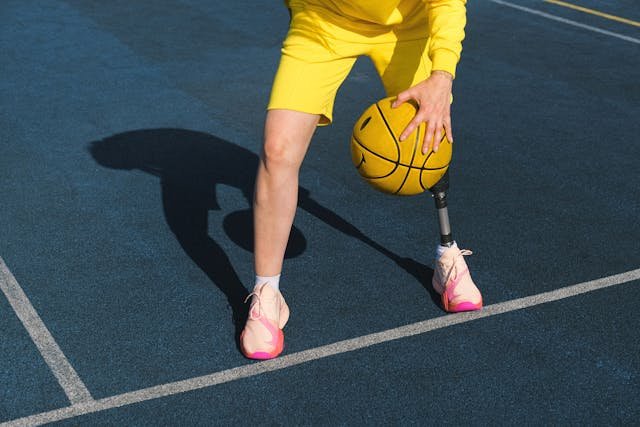
Children are naturally more active than adults. They run, jump, climb, and explore their environment without fear. This means their prosthetic limbs must be strong enough to keep up with their energy and movement.
Designed for Play and Exploration
Unlike adult prosthetics, which are often built for work-related tasks or daily mobility, pediatric prosthetics need to support a child’s active lifestyle. Kids love sports, playgrounds, and outdoor adventures, so their prosthetics must be both flexible and durable. Advanced materials like reinforced plastics and carbon fiber composites are commonly used to withstand rough use.
Impact Resistance and Safety
Falls and tumbles are part of childhood, and prosthetics need to handle these impacts. A child’s prosthetic limb is designed with extra reinforcement to withstand frequent impacts while remaining lightweight. Additionally, padding and soft liners are often included to prevent injuries from falls.
Encouraging Movement and Independence
A well-designed pediatric prosthetic encourages movement and independence rather than limiting it. Robobionics prioritizes lightweight designs that allow natural movement, helping children gain confidence in their abilities. This ensures they can participate in physical activities just like their peers, without feeling restricted.
3. Psychological and Emotional Considerations
The emotional impact of limb loss is different for children compared to adults. Kids may not fully understand their condition, and they may feel different from their friends. A well-designed prosthetic can boost their confidence and help them feel included.
Self-Esteem and Social Acceptance
Children can sometimes feel self-conscious about wearing a prosthetic limb, especially in social settings. To help with this, pediatric prosthetics are often designed to be visually appealing, with bright colors, patterns, or even superhero-themed designs. This makes the limb feel like a fun extension of their personality rather than just a medical device.
Adapting to a Prosthetic at a Young Age
Children adapt to new situations more easily than adults. When they receive a prosthetic at a young age, they quickly learn to integrate it into their daily activities. Early exposure to a prosthetic limb increases their comfort level and helps them develop essential motor skills.
Support from Family and Therapists
A strong support system is key in helping a child accept and use their prosthetic confidently. Parents, teachers, and therapists play a huge role in encouraging children to use their limb effectively. At Robobionics, we provide guidance on gamified home-based rehabilitation to make the adaptation process engaging and enjoyable.
4. Technology and Features
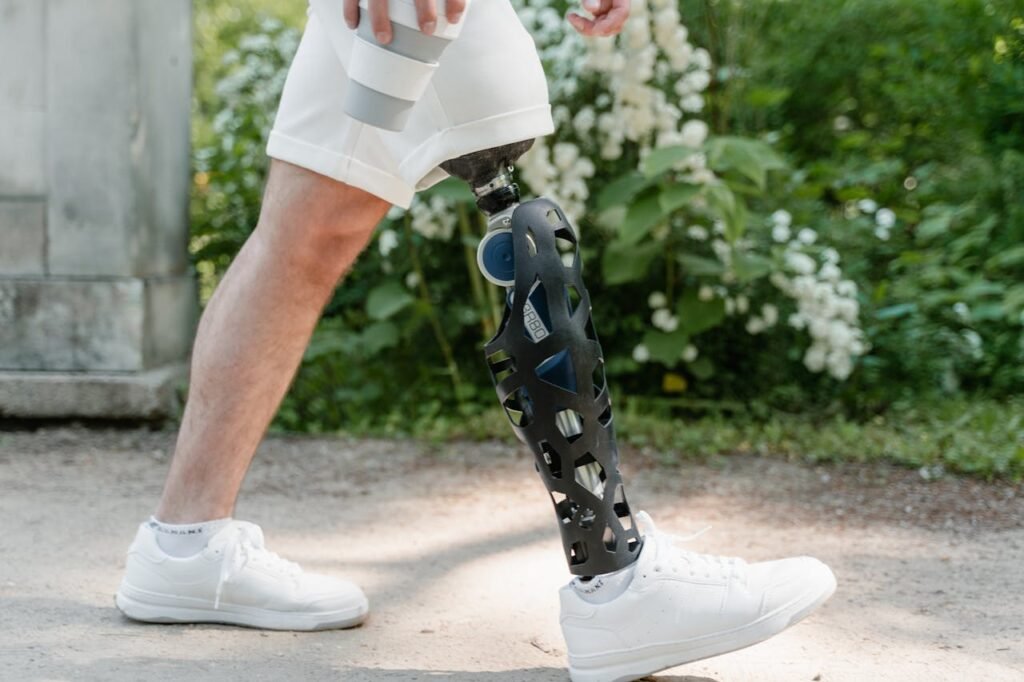
Modern prosthetics have come a long way in terms of functionality, and pediatric prosthetics incorporate some of the most advanced features available. However, they are also designed with a child’s specific needs in mind.
Advanced Prosthetic Hands and Arms
For children with upper limb loss, bionic hands like our Grippy™ offer intuitive movement and control. These advanced prosthetics use sensors that detect muscle signals, allowing the child to move their prosthetic naturally. This helps them perform everyday tasks like holding objects, writing, or playing with toys.
Leg Prosthetics for Active Kids
Lower limb prosthetics for children are designed for balance and flexibility. Some specialized designs include energy-return feet, which provide a spring-like effect, making walking and running more natural. These features help kids move with ease and enjoy sports or physical activities without limitations.
Lightweight and Comfortable Designs
Unlike adult prosthetics, which may focus more on advanced mechanics, pediatric prosthetics emphasize comfort and ease of use. Kids need lightweight devices that don’t slow them down. Robobionics ensures that each pediatric prosthetic is ergonomically designed for maximum comfort and usability.
5. Training and Rehabilitation
Adapting to a prosthetic limb requires practice and guidance, especially for children who are still learning how to move and interact with the world.
Learning to Use a Prosthetic Early
When a child first receives a prosthetic, they need time to learn how to use it effectively. Training focuses on improving balance, grip strength, and overall coordination. Many children pick up these skills quickly with the right guidance.
Gamified Rehabilitation for Better Adaptation
To make training more engaging, Robobionics offers gamified home-based rehabilitation programs. These involve interactive games and exercises that make it fun for children to practice using their prosthetic limb. This approach keeps them motivated and helps them develop skills in a stress-free environment.
Ongoing Support and Adjustments
Rehabilitation doesn’t stop after the prosthetic is fitted. Continuous support ensures that the child’s prosthetic remains comfortable and functional as they grow. Parents and therapists work together to monitor progress and make necessary adjustments.
6. Weight and Size Considerations
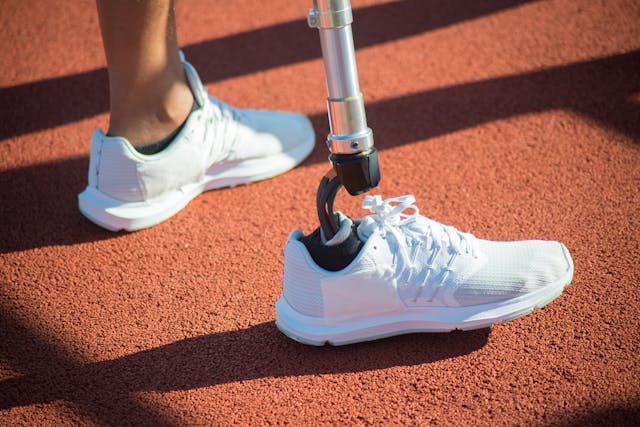
Children have smaller bodies and developing muscles, which means their prosthetic limbs must be lightweight and proportionate to their size.
Lighter Materials for Better Comfort
Adult prosthetics are often made from heavier materials like carbon fiber, titanium, or high-strength plastics because they need to support more weight. However, pediatric prosthetics use ultra-lightweight materials to ensure the child doesn’t feel weighed down. A heavy prosthetic can cause fatigue, discomfort, and difficulty in movement, which is why careful material selection is crucial.
Proportion and Balance Are Key
A prosthetic limb should match a child’s natural proportions to maintain proper balance and posture. If a prosthetic is too big or too heavy, it can lead to unnatural walking patterns or strain on the developing body. Pediatric prosthetists carefully design each limb to maintain a natural look and feel, preventing long-term physical issues.
Growth-Friendly Components
Since kids grow fast, their prosthetic limbs must be designed to expand with them. Adjustable socket systems and modular parts allow the prosthetic to be resized rather than completely replaced, making the transition easier as the child gets bigger.
7. Skin Sensitivity and Comfort
Children’s skin is more delicate than an adult’s, making comfort a top priority in pediatric prosthetics.
Soft Liners and Skin Protection
Prosthetic sockets—the part that connects the limb to the body—must be gentle on a child’s sensitive skin. Soft liners, padded interiors, and breathable materials help prevent irritation, blisters, and pressure sores. Unlike adult prosthetics, which often prioritize durability and functionality, pediatric prosthetics emphasize comfort to ensure children wear them without hesitation.
Avoiding Allergic Reactions
Since children’s immune systems are still developing, they may be more prone to allergic reactions from certain materials. Pediatric prosthetics use hypoallergenic materials to reduce the risk of irritation and ensure long-term comfort.
Accommodating Rapid Changes in Residual Limb Size
Children’s limbs change not only in length but also in shape. If a prosthetic socket is too tight, it can cause discomfort and restrict movement. If it’s too loose, it may lead to skin irritation or even cause the prosthetic to slip off. Pediatric prosthetists monitor these changes closely to ensure a proper fit at all times.
8. Functional Needs and Usage Goals

Children and adults use prosthetic limbs for different purposes, which impacts their design and features.
Daily Activities and Developmental Needs
Children’s prosthetic limbs are designed to help them with everyday tasks like playing, running, climbing, and social interactions. Adults, on the other hand, may need prosthetics designed for work-related tasks, driving, or specific professional activities. Pediatric prosthetics must be versatile enough to support different developmental milestones.
Encouraging Motor Skill Development
Children are still learning fine motor skills, so their prosthetic limbs must support hand-eye coordination and grip strength development. Adaptive prosthetic hands like Grippy™ allow children to learn how to grasp, hold, and manipulate objects with ease, helping them gain independence.
Different Walking and Running Needs
Adult prosthetic legs are usually designed for stability and endurance, whereas pediatric prosthetics focus on flexibility and agility. Energy-return feet, shock-absorbing designs, and high-activity legs ensure that children can run and play just as actively as their peers.
9. Customization and Personalization
Children love to express themselves, and their prosthetics should reflect their personality and style.
Fun, Kid-Friendly Designs
Unlike adult prosthetics, which often come in neutral or natural-looking tones, pediatric prosthetics are often designed with bright colors, fun patterns, and even custom artwork. A prosthetic with a superhero, cartoon character, or favorite color can make a child feel more excited about wearing it.
Psychological Benefits of Personalization
Custom designs help children feel more confident and reduce any anxiety about looking different from their friends. A prosthetic that feels like a cool accessory rather than a medical device makes a big difference in social settings.
Interchangeable Parts for Growing Kids
Some pediatric prosthetics come with interchangeable covers or adjustable designs, allowing kids to switch up their look over time. This flexibility ensures that as their tastes change, their prosthetic can change with them.
10. Learning Curve and Training Methods
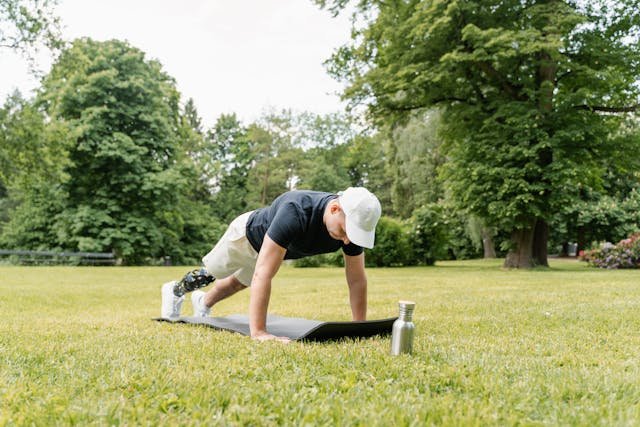
Children and adults learn how to use prosthetic limbs in different ways, requiring different training approaches.
Faster Adaptation in Children
Children tend to adapt to new prosthetics much faster than adults because they are naturally curious and open to learning new skills. While an adult may struggle with adjusting to a prosthetic limb due to years of using their natural limbs, a child can integrate a prosthetic more seamlessly into their daily routine.
Play-Based Training for Kids
Traditional prosthetic training for adults often involves structured exercises and therapy sessions. For children, however, play-based learning is more effective. Activities like drawing, puzzles, or interactive video games help children develop fine motor skills while making the learning process enjoyable.
Parental Involvement in Training
Unlike adults, who can independently manage their prosthetic adaptation, children rely heavily on parents and caregivers. Parents play a crucial role in encouraging their child to use their prosthetic limb, providing positive reinforcement, and ensuring they practice regularly.
11. Safety Features and Risk Factors
Children are naturally more adventurous than adults, which means their prosthetics must have extra safety measures to protect them from injuries.
Extra Stability for Better Balance
Since children are still developing their coordination and balance, their prosthetic limbs are designed to provide more stability. Wider bases on prosthetic feet, shock-absorbing materials, and flexible joints help reduce the risk of falls and make movement feel more natural.
Breakaway Mechanisms for Safety
Some pediatric prosthetics include breakaway features that prevent serious injuries. If a child’s prosthetic limb gets caught on something, the breakaway mechanism allows it to detach safely, reducing the chance of twisting or falling. Adult prosthetics, on the other hand, are usually designed to stay firmly in place.
Rounded Edges and Softer Materials
Since children tend to fall more often, their prosthetics often feature rounded edges and softer materials to prevent cuts, bruises, or discomfort. Unlike adult prosthetics, which prioritize strength and rigidity, pediatric prosthetics balance durability with safety.
12. Prosthetic Control and Simplicity
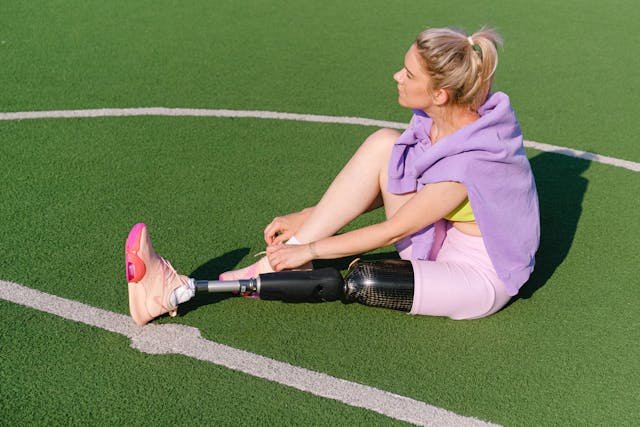
The way a prosthetic limb is controlled differs between children and adults due to differences in muscle strength, coordination, and cognitive development.
Simplified Control Systems for Kids
While adult prosthetics often use complex control systems, such as advanced myoelectric sensors or microprocessors, pediatric prosthetics tend to have simpler mechanisms. This allows children to learn and adapt more quickly without frustration. As they grow older and gain better motor control, they can transition to more advanced prosthetic technologies.
Stronger Grip Assistance in Pediatric Prosthetic Hands
For children using upper limb prosthetics, grip strength is often a challenge. Their hands and arms may not have fully developed muscles, making it harder to activate prosthetic fingers. Many pediatric prosthetic hands include automatic grip-assist technology that helps them hold onto objects more securely.
Reduced Cognitive Load for Younger Users
Children don’t have the same ability to multitask as adults. While an adult may be able to focus on controlling their prosthetic limb while performing a separate task, children need a prosthetic that operates as naturally as possible, with minimal thought required. Pediatric prosthetics prioritize intuitive design to make movements feel as natural as possible.
13. Cost and Insurance Considerations
Because children outgrow their prosthetic limbs much faster than adults, cost and affordability are major concerns for families.
Frequent Replacements Lead to Higher Costs
Unlike adult prosthetic users, who may only need a replacement every few years, children require new prosthetic sockets or components every 6 to 12 months. This leads to a higher overall cost, making affordability a key factor in pediatric prosthetic design.
Cost-Effective, Modular Designs
To keep costs manageable, pediatric prosthetic limbs are often designed with modular components. Instead of replacing the entire limb, parents can replace or adjust specific parts as their child grows. At Robobionics, we focus on affordable solutions that grow with the child, minimizing the financial burden on families.
Insurance Coverage Differences
In many cases, insurance providers have different policies for pediatric prosthetics compared to adult prosthetics. Some plans cover more frequent replacements for children, while others may have strict limits. Parents must navigate these policies carefully to ensure their child receives the best possible prosthetic care.
14. Long-Term Physical Development Considerations
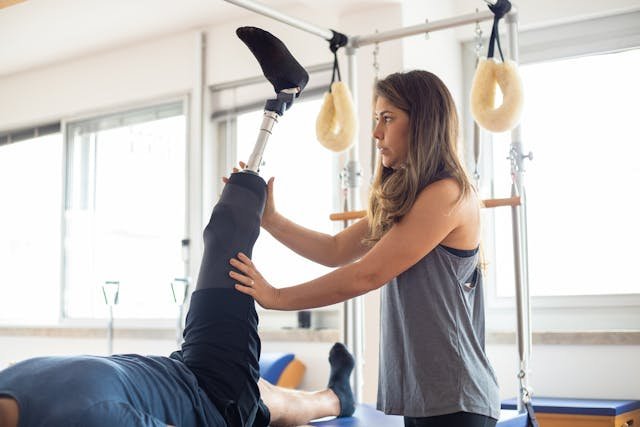
A child’s body is still developing, which means their prosthetic must support healthy growth and physical development.
Avoiding Postural Issues
If a prosthetic limb is not designed correctly, it can cause long-term posture and spinal alignment issues in children. Pediatric prosthetists ensure that prosthetic limbs are properly balanced to prevent issues like scoliosis, uneven gait, or joint strain.
Preserving Natural Joint Movement
Many pediatric prosthetics are designed to allow as much natural movement as possible. Unlike adult prosthetics, which may rely on rigid structures for support, children’s prosthetics incorporate flexible joints that encourage natural motion and prevent stiffness.
Preventing Muscle Weakness
Children who use prosthetic limbs still need to develop their natural muscles and coordination. Some pediatric prosthetic designs include dynamic features that encourage muscle use, ensuring that the child’s body continues to develop strength and flexibility.
15. Social and School Environment Adaptation
Children spend much of their time in social and school settings, which brings unique challenges that adult prosthetic users don’t face as often.
Reducing Social Stigma
Children with prosthetic limbs may feel self-conscious in social situations, especially at school. Pediatric prosthetics often include fun designs, bright colors, or themed covers to make them feel like a cool accessory rather than a medical device.
Adapting to Classroom Activities
Unlike adults, who mainly use their prosthetics for work and daily tasks, children must use them for school activities such as writing, drawing, and playing. Pediatric prosthetic hands are often designed to grip pencils, markers, and other classroom tools with ease, allowing children to participate fully in learning activities.
Peer Interaction and Confidence Building
A child’s self-confidence is closely linked to how they perceive their prosthetic limb. If a prosthetic is uncomfortable or hard to use, they may be reluctant to participate in activities with their peers. Well-designed pediatric prosthetics help children feel more confident, leading to better social interactions and overall well-being.
Conclusion
Pediatric prosthetics are vastly different from adult prosthetics because they must accommodate growth, high activity levels, and the emotional well-being of the child. They require frequent adjustments, durable materials, and designs that encourage independence and confidence. At Robobionics, we are committed to providing high-quality, cost-effective, and innovative prosthetic solutions that help children live full, active lives.
If your child needs a prosthetic limb, we’re here to help. Book a free demo of Grippy™ today and experience the difference! Our team is ready to guide you through the process and ensure your child receives the best prosthetic solution for their needs.
Interested in learning more about pediatric prosthetics? Contact us today for expert advice and personalized solutions!



